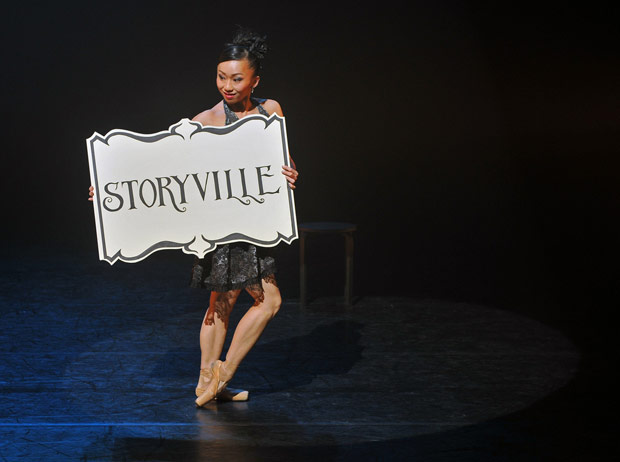
Ballet Black
Storyville | Together Alone | Running Silent | Captured
London, Linbury Studio Theatre
1 March 2012
www.balletblack.co.uk
Gallery of 24 pictures by Dave Morgan
Ballet Black’s seven dancers may not have as full a schedule as bigger ballet companies (though this year they’re up to 25 performance dates) but they do have remarkable access to choreographers. Their founder director, Cassa Pancho, gives opportunities to relatively untried dance-makers, as well as commissioning experienced choreographers, such as Christopher Hampson, for the current season.
She asked him for a narrative work and he obliged, as he explains in his programme note for Storyville. The title refers to the red light district of New Orleans in 1915, when an enterprising madam, Lulu White, ran an infamous dance hall/brothel called Mahogany Hall. Hampson envisages his story ballet as an allegory of New Orleans itself, poor, exploited, booming, corrupted, at the mercy of harsh economic and natural forces – just like his heroine, Nola (an acronym of New Orleans, Louisiana).
It’s the same sort of device Kurt Weill used in his Rise and Fall of the City of Mahagonny, in which the mythical American city represents the treacherous allure of capitalism. Rather than Mahagonny, Hampson uses arrangements of Weill’s music for The Threepenny Opera plus two haunting songs, Lost in the Stars and Je ne t’aime pas, from the same period. The story he tells in the ballet is succinct, without the heavy-handed moralising satire of, for example, Weill’s The Seven Deadly Sins, that has defeated so many choreographers.
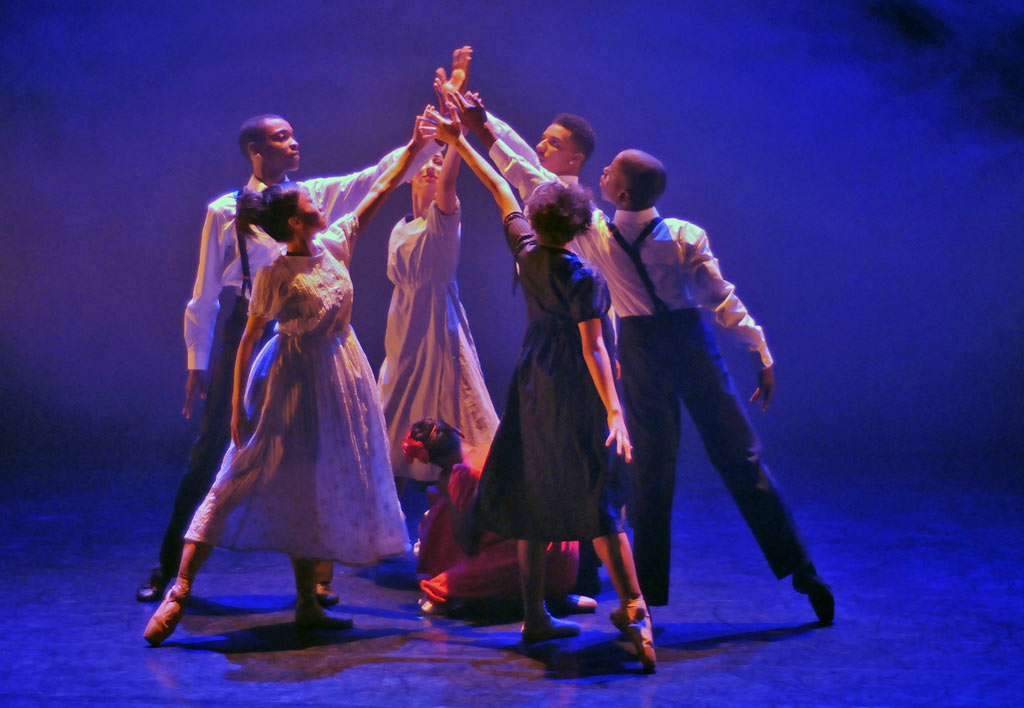
Nola’s rise and fall is summarised in the opening (and closing) song, telling of the ‘little dark star’ that got lost in the night. Dressed demurely in a red frock with white lining, Cira Robinson emerges into the light from a circle of flickering hands to meet her fate. A naive, joyous youngster, clutching a rag doll, she is soon exploited as a fresh commodity by Lulu White (Sarah Kundi) and her pimp, Mack (Jazmon Voss). Silent movie placards paraded by showgirls (Kanika Carr and Sayaka Ichikawa, and Joseph Poulton as a showboy) identify characters, places and time spans. ‘One Year Later’ and Nola is now a practised burlesque dancer in Madam White’s Mahogany Hall.
She covers up her skimpy red outfit with a lacy peignoir when she encounters a nice young man, Damien Johnson, who loves her. They dance an exhilarating duet, whose balletic lifts pay knowing homage to MacMillan’s Manon, before he dashes off after a besotted kiss. But Nola is in thrall to possessive Lulu and sinister Mack the Knife. In a nightmarish vision, she sees them as a voodoo queen and king, sporting skull masks and sticking pins into her rag doll. ‘One Year Later’ and she’s on the bottle, unable to get free.
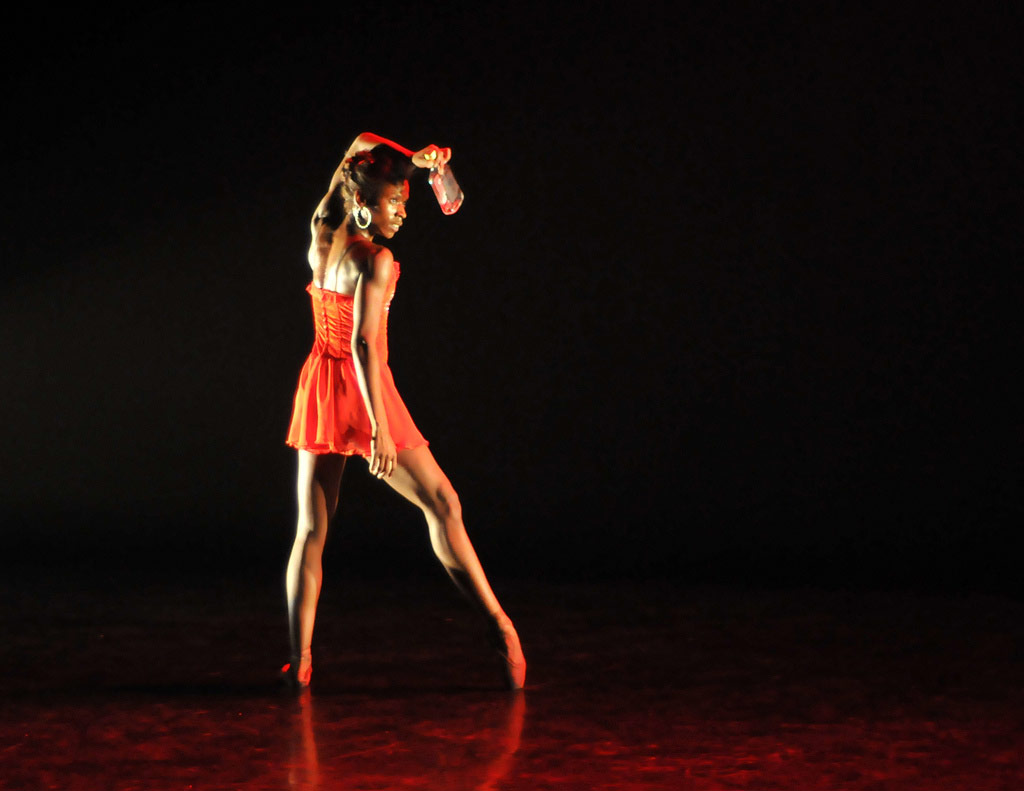
Lover boy tries to rescue her with increasingly desperate lifts, but the manipulative dance-hall pair, entwined in a vicious tango, reclaim her with a glittering bracelet and necklace (Manon again). Doomed Nola tries to reject her lover, to the contradictory lyrics of ‘Je ne t’aime pas’, before collapsing in his arms and sinking back into the circle from which she rose. It’s a familiar morality tale, but Cira Robinson’s heartfelt commitment as Nola makes us care anew. Hampson has indeed turned her into a star. Weill’s music enables him to switch between dance styles – jazzy, classical, showtime, ballroom – while recounting Nola’s story as graphically as a silent movie. (I doubt, though, that I’d have cottoned on to the New Orleans allegory without reading his programme note.)
Much credit must go to Gary Harris for designing the many changes of costume and the scary voodoo headdresses, and to David Plater for the atmospheric lighting. Together they create a sense of place and period on an otherwise stark stage. Without huge resources, Cassa Pancho has been able to treat Ballet Black’s audiences to an original bittersweet narrative ballet.
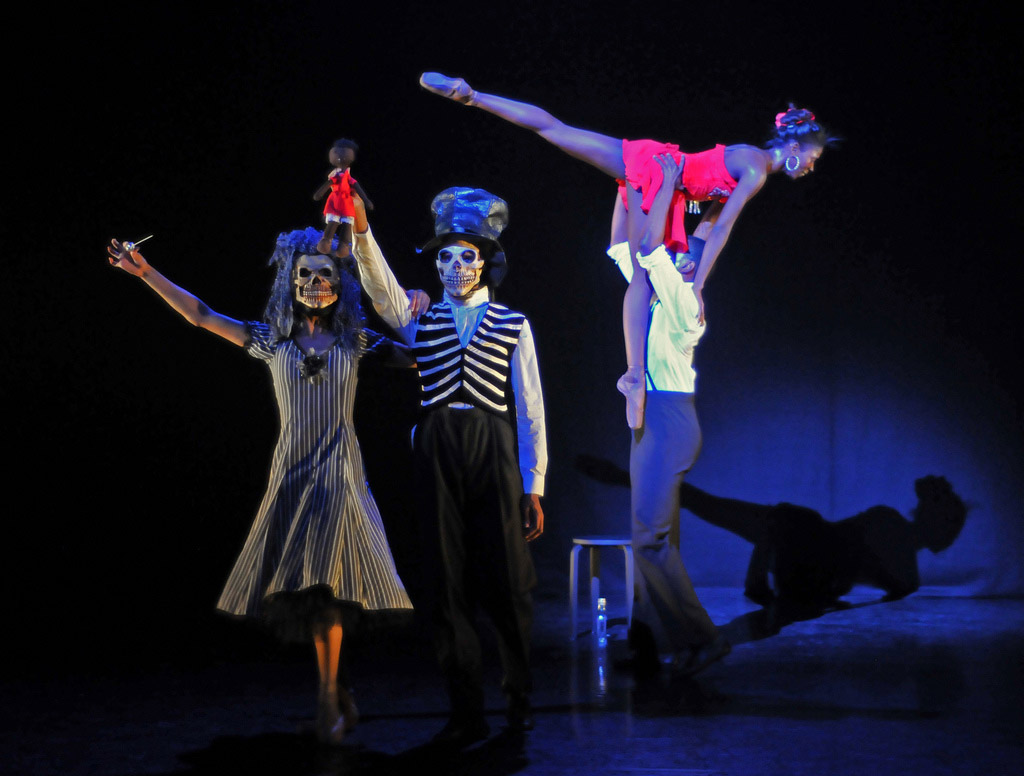
Storyville occupies the second half of the programme, which offers three premieres before the interval. The opener is a duet, Together Alone, by Royal Ballet dancer Jonathan Watkins. Sarah Kundi and Jazmon Voss are paired up as a conflicted couple, who begin and end with their backs to us, standing apart. She starts on her own, he reaches out to her, but they don’t touch or meet each other’s eyes. They glare moodily, move in counterpoint, battle for attention, seem to reconcile in a glow of pink lighting and then split up. Easy to read but a bit too closely linked to the rhythmic shifts in the music, composed to fit by Alex Baranowski.
A solo choreographed by Jonathan Goddard, Running Silent, to a virtusoso cello solo by Mark Bowden, is also too relentlessly matched to its music. Intended to be danced by a man or a woman, it was performed on Thursday night by Kanika Carr. I admired her stamina but longed for moments of stillness well before she finally lay crushed. According to Goddard’s programme note, his inspiration was the pressure of deep water, twisting and tugging the body’s movements. So, lots of striving and writhing on the floor, interspersed with balletic spins and runs, without a pause for breath.
A relief, then, for the first half to close with Martin Lawrance’s Captured, which responds to Shostakovich’s String Quartet No. 11 without being enslaved by it. This is his second work for Ballet Black, experimenting with neoclassical ballet technique instead of the contemporary dance style in which he choreographs for Richard Alston’s company. He contrasts two couples, Sayaka Ichikawa with Damien Johnson and Cira Robinson with Joseph Poulton, a talented first-year apprentice. There are constant shifts in alliances as couples become trios or join forces as same-sex pairs, competing for territory or dominance. The String Quartet’s short movements define erotic rivalry between the dancers, though Lawrance’s sustained phrase-making is never restricted by Shostakovich’s angry outbursts. Robinson is outstanding in her ferocity, complemented by smooth, swift partnering by Poulton and Johnson. Lawrance understands how ballet lifts work technically, as well as how to make them expressive of moods and emotions. By the time all four dancers combine in unison for the last of the seven movements, the stage is crackling with tension finally about to be resolved. Captured is a triumph for the company and the choreographer.












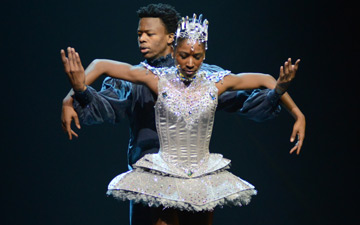


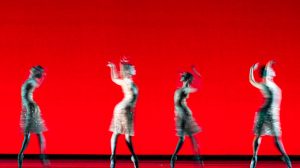
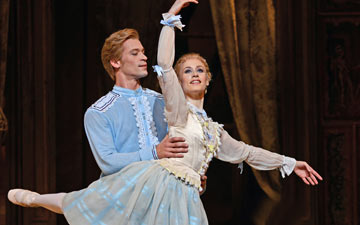
You must be logged in to post a comment.